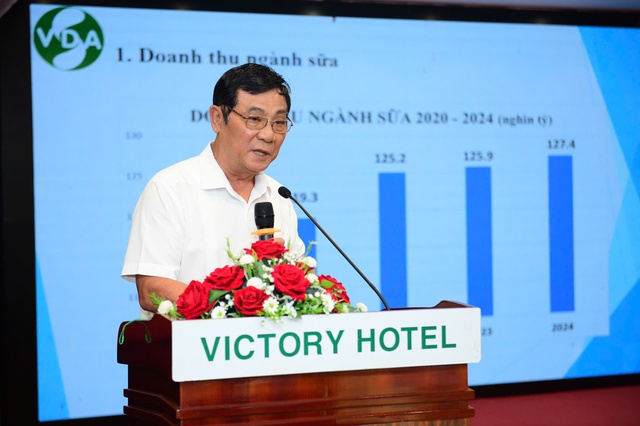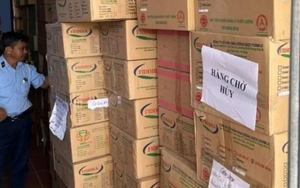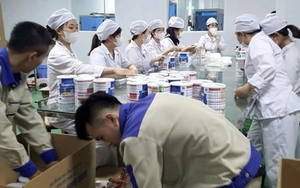
Vietnam’s Deputy Minister of Industry and Trade Truong Thanh Hoai (C) chairs a conference on dairy sector development to 2030, with a vision to 2045, in Ho Chi Minh City, Vietnam, August 12, 2025. Photo: Quang Dinh / Tuoi Tre
The Ministry of Industry and Trade said the dairy sector aims to raise annual per capita milk consumption to 40 liters by 2030 and 70 liters by 2045, from the current average of 26–28 liters.
Under the strategy, processed liquid milk output is projected to reach 4.2 billion liters by 2030 and 7.5 billion liters by 2045.
Domestic raw milk production is targeted at three billion liters by 2030, meeting about 70–72 percent of processing demand, and 6.2 billion liters by 2045, covering up to 82 percent.
“The market potential is still significant,” said Tran Quang Trung, chairman of the Vietnam Dairy Association.
He noted Vietnam’s consumption lags behind regional levels, including Thailand at 35 liters per person and Singapore at 45 liters.
Average intake in Europe ranges from 80 liters to 100 liters.
Currently, domestic fresh milk meets about 40 percent of demand.
Imports of milk ingredients and specialized nutrition products total nearly US$1 billion annually, according to the association.
These include inputs for formula, medical nutrition, and exports—segments where domestic supply remains limited.
According to a government decision on livestock strategy, Vietnam targets 1.7-1.8 million metric tons of raw milk by 2025 and 2.6 million tonnes by 2030.
The national dairy herd is expected to reach 650,000-700,000 cows, with 60 percent raised on farms.

Tran Quang Trung, chairman of the Vietnam Dairy Association, speaks at a dairy development conference in Ho Chi Minh City, Vietnam, August 12, 2025. Photo: Quang Dinh / Tuoi Tre
Deputy Minister of Industry and Trade Truong Thanh Hoai said the government will tighten controls on imported powdered milk, including stricter shelf-life requirements and traceability from production to retail.
“Reducing dependence on imports is a goal we must pursue,” Hoai said.
“We will encourage investment but enforce rigorous technical standards and monitoring.”
Several industry participants urged the government to simplify investment procedures and offer incentives on tax, land, and credit.
Nguyen Quang Tri, marketing executive director at Vinamilk, Vietnam’s largest dairy producer, said coordinated implementation across ministries would be critical.
“The strategy is clear. What matter now are decisive action and synchronized cooperation,” Tri said.
Officials also called for regulatory reform, noting that many national dairy standards were issued more than a decade ago so they do not reflect current processing technologies or packaging.

Nguyen Quang Tri, marketing executive director at Vinamilk, gives input on Vietnam’s dairy sector strategy during a conference in Ho Chi Minh City, Vietnam, August 12, 2025. Photo: Quang Dinh / Tuoi Tre
The Vietnam Livestock Association said updating standards is essential to support product quality and international alignment.
Nguyen Xuan Duong, chairman of the association, said the share of milk processed from fresh domestic sources had risen from just eight percent in 2009, thanks to improvements in raw milk quality standards.
He proposed framing milk security as part of national food security and aligning dairy regulations more closely with Codex Alimentarius guidelines, especially for vulnerable groups such as infants and the elderly.
Duong also called for reviving the school milk program, citing Thailand’s model, which spends around $500 million annually providing milk for seven million children.
The conference, titled ‘Development of Vietnam’s Dairy Industry to 2030, Vision to 2045,’ was held in Ho Chi Minh City by the Ministry of Industry and Trade and the Vietnam Dairy Association.




Max: 1500 characters
There are no comments yet. Be the first to comment.